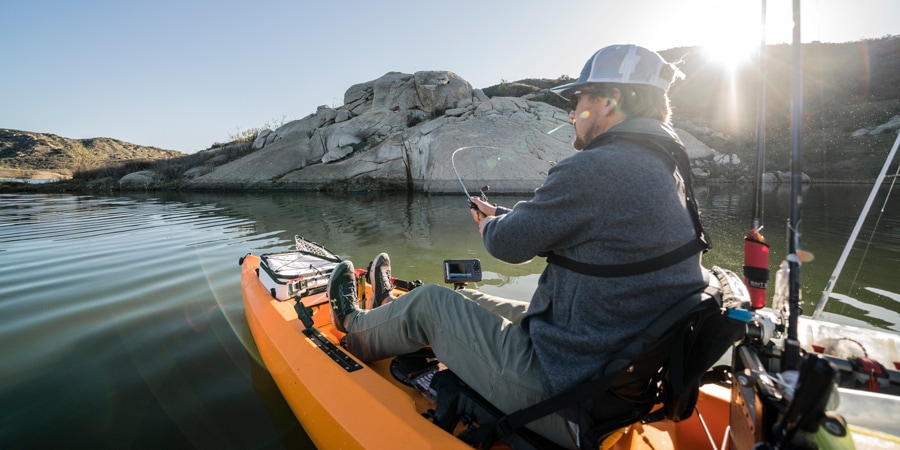Fishing with a kayak opens up new opportunities to stalk fish in waters that aren't so easily accessed by larger or motorized boats. It combines the quiet of paddling low on the water with the thrill of reeling in a big one. With a slimmer profile and better portability than traditional boats, you can be stealthy as you glide over waters to your favorite fishing spot and sneak up on fish without spooking them.
With so many options, you'll have a lot of decisions to make when shopping for a fishing kayak. Here are some key decision points to help you narrow down your choices when you shop:
- Decide if you want a sit-on-top, inflatable or traditional sit-in kayak. Sit-on-top kayaks are easiest to get in and out of while inflatables are great for those with limited storage.
- Determine if you want to paddle or pedal. You may prefer the exercise and simplicity of paddling, or want the advantages of pedaling with your feet so your hands are free for fishing.
- How much weight are you hauling? You'll want to think about the boat's weight capacity. Consider your own weight and the amount of gear you want to haul. Are you a minimalist or do you like having a lot at your disposal?
- Do you want to fish while standing? Stability is key here. Wider hulls tend to be more stable, allowing you to cast farther and with more confidence while standing; the tradeoff is potentially a slower boat.
- How do you plan to transport the kayak? How easy is it to handle and lift the kayak? Can you carry it solo to where you want to fish? Can you transport it on top of your car or in your truck bed, or will you need a trailer?
Types of Fishing Kayaks
Sit-on-top kayaks
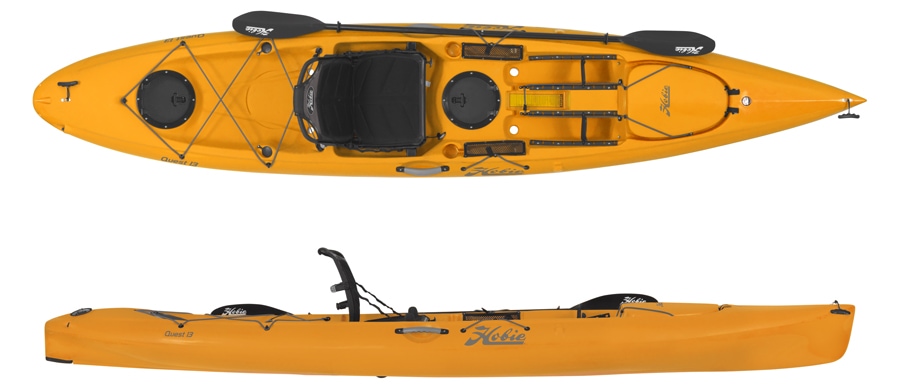
Sit-on-top kayaks are more popular for fishing because of the ease and convenience of getting on and off of them.
- They're generally more stable; many allow you to stand up in them, which is a nice feature when you're casting or reeling in big fish.
- Scupper holes make them self-bailing, so you don't need to pump out water.
- Because you sit higher on the water than you do in sit-in kayaks, you have a better view, which is particularly helpful when you're sight fishing.
- You're likely to get wet with sit-on-tops, so they may not be as ideal in colder climates unless you're dressed appropriately.
- They're typically heavier than comparable sit-in kayaks.
- It's easier to access storage while fishing because you can dangle your legs and turn your body around to reach rear hatches and other parts of the kayak.
Inflatable Kayaks
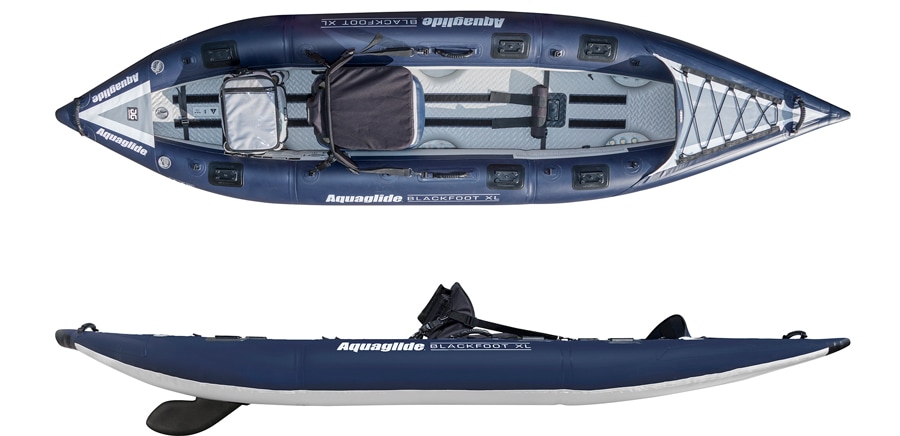
Because they pack down relatively small, inflatable kayaks are an ideal option for those short on storage space. Be sure to invest in a good pump if your kayak doesn't come with one.
- Once inflated, they're lightweight and easy to carry.
- They're not as rigid, so you may need to pay attention to where you launch and land.
- Because they deflate, they can be easier to transport.
- Some high-quality models may allow you to stand up in them, but others may not be stable enough.
- Some inflatables may not paddle as well or as fast as traditional hard shells.
Traditional Sit-in kayaks
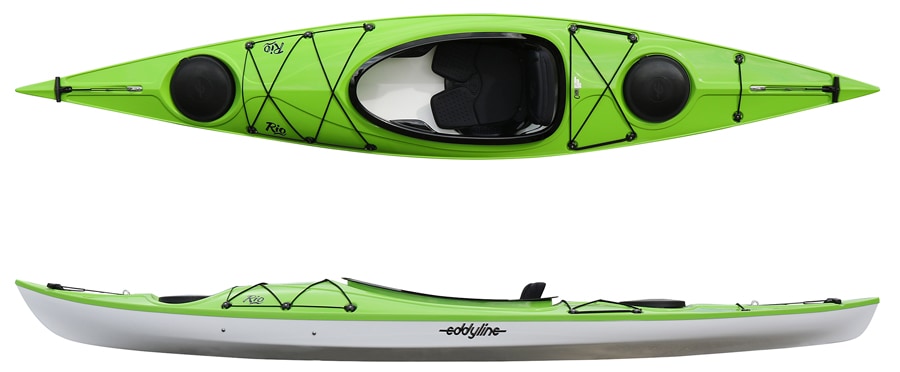
Sit-in kayaks typically have an optional spray skirt to keep water out of the cockpit. They may not be as common for fishing but they're a better choice if you want to stay drier.
- They're much more efficient to paddle but you can't move your body around on the kayak as much as you would if you're sitting on top.
- They're not self-bailing so if you take on significant water in the cockpit (such as from a big wave), you'll need a bilge pump.
- Typically, you're sitting lower in the water than sit-on-tops, so your view for sight fishing is more limited.
- For colder waters, sit-in kayaks help protect and insulate your lower body from the elements.
- They have covered gear compartments, but access to the gear in them is mostly limited to times when you're off the water.
Paddle vs. Pedal Kayaks for Fishing
Some fishing kayaks now come with a pedal drive system or allow you to install a pedal system later.
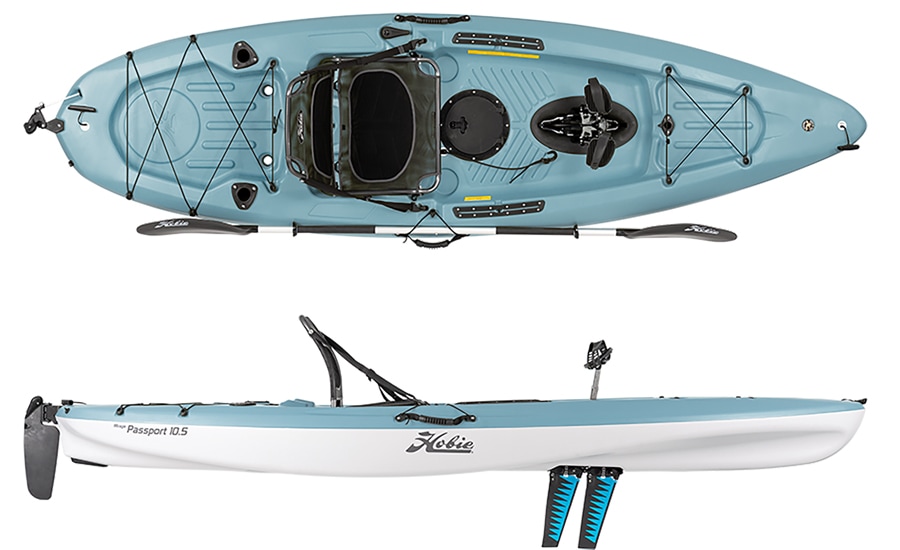
Pedal-powered: Kayaks with pedal propulsion systems allow you to "paddle" with your feet so your hands are free for fishing. This eliminates one of the biggest challenges with kayak fishing: managing boat position with a paddle in one hand and a rod in the other. Pedal-powered kayaks are equipped with bike-like pedals that turn on a prop or push-pedals that power a pair of fins. Steering is done via a rudder that's operated by a hand control. Pedal technology adds to the cost of a kayak and requires more maintenance. The pedal system also hangs lower in the water so it may limit access to very shallow waters. But pedaling with your feet offers some fishing advantages, including getting a more natural troll because you can maintain a more consistent speed.
Paddle: Traditional paddle kayaks are more affordable, easier to use and simpler in design and operation. They're lighter than pedal-powered kayaks so they're much easier to transport. You can generally access shallow waters better because there isn't a pedal drive system underneath the boat. Many anglers who get into kayak fishing enjoy the exercise that comes with paddling or the simplicity of a traditional paddle kayak.
Where Do You Plan to Fish?
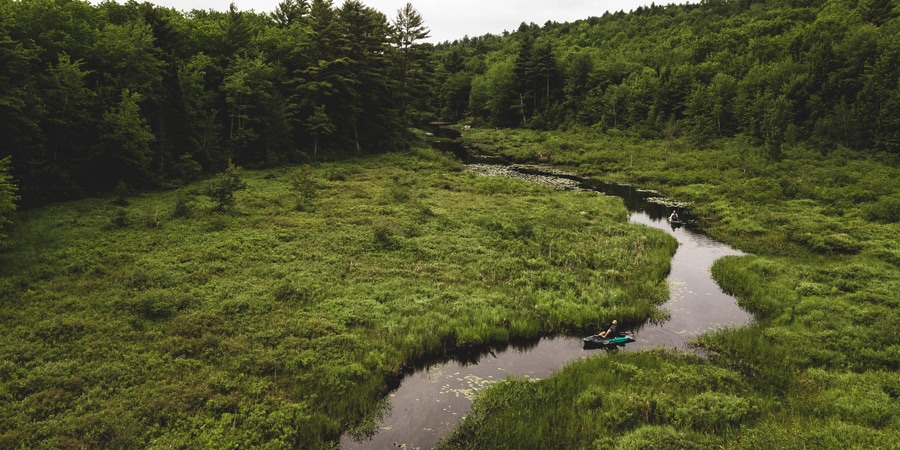
Where you plan to fish is another factor in deciding the type of kayak you'll need. Are you fishing in moving or still water? Will you spend a lot of time sight fishing or trolling? Here are just a few things to consider:
Smaller lakes and ponds: If you're fishing in flat calm waters where speed isn't a concern, a shorter, sit-on-top kayak with stability may be a good choice.
Open water: If you need to cover a lot of water (whether on a large lake or offshore) to get to your favorite fishing spot, you may want a longer, narrower sit-on-top kayak that tracks better and moves faster over distances.
Rivers and streams: When fishing rivers or small streams, consider a shorter kayak that is easy to maneuver in tight spaces and can turn better.
Ocean: With wind, waves, currents and tides to consider, a boat with a rudder system can help you navigate better.
Kayak Features
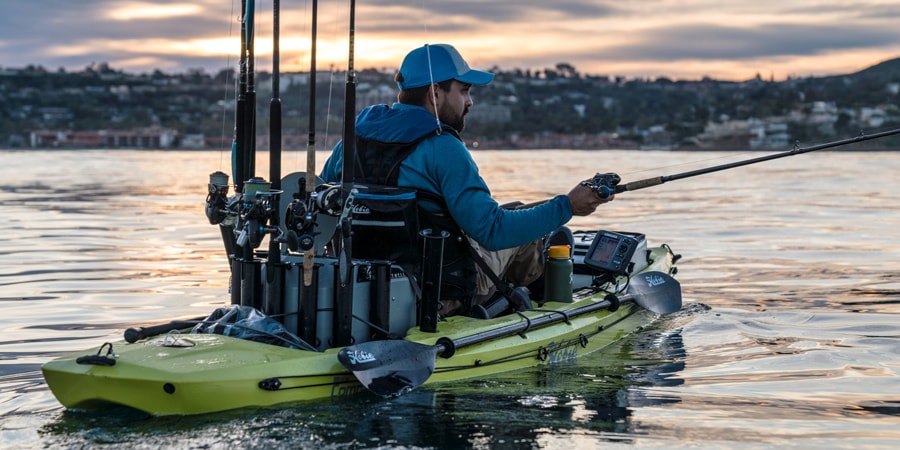
Many kayaks come with a range of features for your fishing needs, from rod holders to mounts that allow you to customize the boat with your favorite accessories.
Rod holders: Many kayaks have mounted rod holders or molded-in rod holders, or grooves on the sides for your rods to fit horizontally. You can also easily install rod holders to your kayak.
Seats: Finding a comfortable seat is like finding a shoe that fits. It's worth the time to do it. Test the seats out for comfort, back support, seat cushion and where it hits on the back of your leg. On some kayaks, you can remove or move the seat to stand in the boat, or you can adjust the height or recline the seat.
Storage options: Are you a minimalist or one of those anglers who has to have a cooler, tackle box, live bait and other fishing necessities with you? Storage options on fishing kayaks include hard, enclosed hatches in the bow, stern and midship for dry storage; mesh pockets; large tank wells with room for your milk crate; or other storage container or bungee cords to secure dry bags. Consider whether you need internal storage for your rods, dry bags or other gear that you don't want to get wet. One benefit to sit-on-top kayaks is that you have readier access to much of your gear that's kept on top and inside the hatches. With sit-in kayaks, it may not be as easy to access rear hatches while fishing.
Gear tracks: Slide tracks let you attach accessories such as phones and fish finders to your kayak without drilling holes. If yours doesn't come with gear tracks, you can install them.
Standing decks: If fishing while standing is important to you, look for footwells that are designed for standing. Some may allow you to add support bars or assist straps.
Rudders: Kayaks with rudders help with tracking in wind. The rudder angle can be constantly readjusted via foot pedals, so it's more responsive to changing conditions when you're on the move. You may be able to install a rudder later on some kayaks.
Motor drive: For those looking to get to fishing spots without the tired legs and arms, several brands sell kayaks that can be outfitted with a motor. Some motor drive systems allow you to easily switch between pedal or motor. On other kayaks, you may be able to mount a trolling motor.
